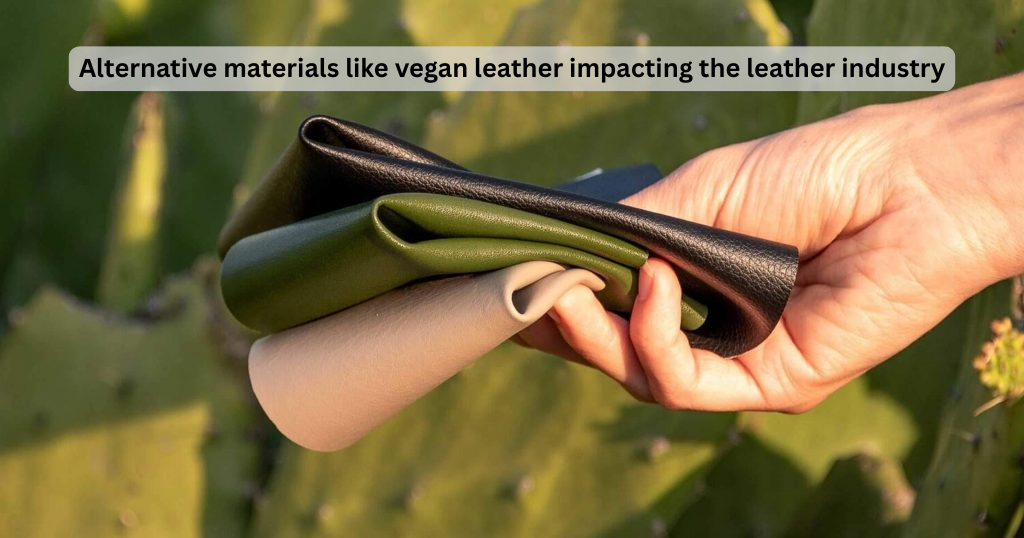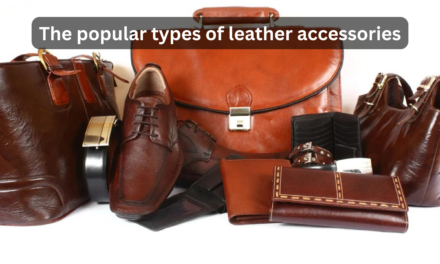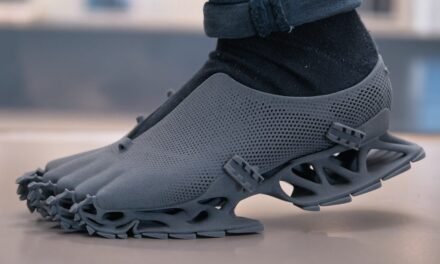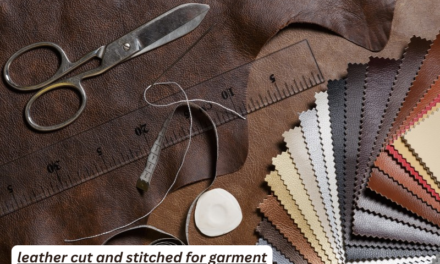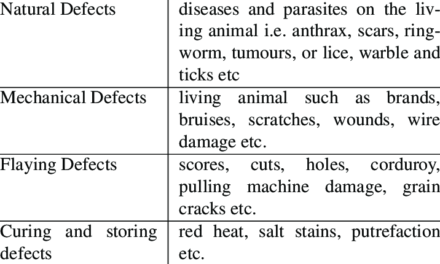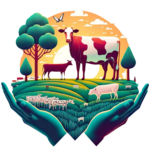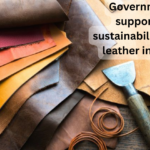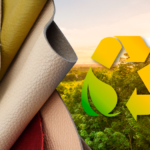Alternative materials like vegan leather are significantly impacting the leather industry by challenging traditional leather production practices and pushing for more sustainable, ethical, and innovative solutions. Here’s how vegan leather and other alternatives are influencing the leather industry:
1. Environmental Impact Reduction
- Vegan leather is often marketed as more eco-friendly because it avoids the environmental issues associated with animal agriculture, such as land use, water consumption, and methane emissions.
- Some vegan leathers are made from plant-based materials (e.g., apple, mushroom, cactus, or pineapple), which require fewer resources and chemicals compared to conventional leather.
- Traditional leather production involves harmful chemical treatments like chrome tanning, which can cause water pollution and soil contamination, but vegan leather alternatives often have lower environmental impact.
2. Shift in Consumer Demand
- There is an increasing shift toward ethical consumerism, especially among younger generations, who are more conscious about animal rights and sustainability.
- The rise in demand for vegan leather is due to its appeal to animal-free and environmentally conscious consumers.
- Brands are recognizing this demand and are adding vegan leather options to their product lines, often offering similar looks and feels to genuine leather without the ethical concerns.
3. Market Expansion and Competition
- The growth of vegan leather is creating new markets for manufacturers, especially those focused on fashion and luxury accessories.
- Vegan leather companies are innovating with new materials that can match or even surpass traditional leather in terms of durability, texture, and aesthetic appeal.
- The increased competition from vegan leather is encouraging traditional tanneries to adopt sustainable practices, such as reducing the use of toxic chemicals and improving the carbon footprint of leather production.
4. Innovation and Material Diversification
- The demand for vegan leather is driving innovation in materials science. New types of vegan leathers are being created from plant-based fibers, biodegradable plastics, and even recycled waste products (e.g., plastic bottles, old textiles, or agricultural waste).
- Materials like mushroom leather (Mycelium), pineapple leather (Piñatex), and apple leather are growing in popularity for their sustainability and unique textures.
- These materials are not only being used in fashion but are also being applied to industries like automotive, furniture, and footwear, further expanding the market for vegan leather.
5. Challenges to Traditional Leather Industry
- Vegan leather alternatives often challenge traditional leather producers in terms of price and market share.
- The availability of cost-effective, high-quality vegan leathers is forcing traditional leather brands to reconsider their sourcing methods and production processes.
- The leather industry is also facing regulatory pressure as governments and organizations push for more sustainable and humane practices, prompting leather companies to explore alternatives to chemical-heavy tanning processes.
6. Consumer Perception and Branding
- Many consumers view vegan leather as a premium or luxury product, especially when it’s marketed as cruelty-free and eco-friendly.
- The use of vegan leather in high-end fashion brands like Stella McCartney and Gucci has enhanced its appeal, positioning it as not just an ethical alternative but a fashion-forward choice.
- However, some consumers still view vegan leather as inferior or less durable compared to genuine leather, which remains a challenge for broader adoption in some markets.
7. Regulatory and Certification Pressures
- Increasingly, both the leather and alternative leather industries are subject to environmental certifications that encourage better sourcing and transparency, such as ISO 14001, GOTS (Global Organic Textile Standard), and the Leather Working Group.
- Vegan leather made from sustainable materials often has an advantage here, as it is typically easier to verify the ethical sourcing of the materials used (e.g., plant-based vegan leather can be traced back to its agricultural sources).
8. Price Considerations
- While vegan leather is generally less expensive than traditional leather in terms of raw material costs, high-quality vegan leathers made from natural, renewable resources like mushrooms or pineapple can still be pricey.
- Mass production of vegan leather alternatives is driving cost reductions as technology advances, making it more accessible to a larger consumer base.
9. A More Circular Economy
- Vegan leather supports the concept of a circular economy more directly than traditional leather. For example, many vegan leather products are made from recycled or biodegradable materials that reduce waste.
- Brands that use vegan leather can close the loop by offering more sustainable product lifecycles, encouraging recycling and reducing landfill waste.
10. Impact on Traditional Leather Production Practices
- To stay competitive, traditional leather producers are moving toward greener tanning methods such as vegetable tanning, bio-based tanning agents, and zero-emissions processes.
- The increased availability of sustainable and plant-based leather alternatives has sparked a broader trend toward eco-conscious production in both the leather and fashion industries.
Conclusion
Vegan leather and other alternative materials are having a profound impact on the leather industry by driving sustainability, innovation, and ethical practices. While they challenge traditional leather in terms of market share, they also push for positive change within the leather industry, encouraging better environmental practices, reducing the reliance on animal products, and expanding the range of eco-friendly materials available to consumers.
Hashtags
#SustainableStyle #VeganAccessories #EcoChic #EcoFashion #SustainableLiving #EthicalFashion #EcoFriendlyFashion #SustainableMaterials #EcoFashionista #EcoFriendlyStyle #EcoConsciousFashion #SustainableChoices #EcoFriendlyAccessories #EcoFashionRevolution #EcoFriendlyDesign #EcoFashionForward #EcoFriendlyLeather #EcoFashionMovement #EcoFriendlyTrends #EcoFashionCommunity #EcoFriendlyInnovation

